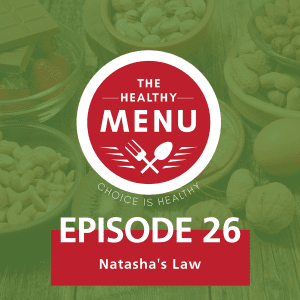
In Episode 26 of the Healthy Menu Podcast, we’ll discuss Natasha’s Law; it’s origins and it’s effects on food businesses.
Light transcript of the Podcast
In July 2016, a fifteen-year-old girl named Natasha Ednan-Laperouse suffered a fatal allergic reaction after eating an olive, artichoke, and tapenade baguette purchased at Pret-a-Manger in Heathrow Airport. The product contained sesame seeds, which Natasha was allergic to, and she was not aware that this ingredient had been pre-baked into the bread that she was eating.
Following the consumption of the food product, Natasha, unfortunately, passed away from anaphylaxis. This all ensued due to the food product not containing the appropriate allergen information, ultimately causing her death.
The incident prompted Natasha’s family to campaign for increased legislation around appropriately labelling food products to include all ingredients and potential allergens. This resulted in the introduction and implementation of Natasha’s Law.
As of October 2021, Natasha’s Law will come into effect and any business based in England must clearly label all food that is packaged and produced on their premises with a complete list of ingredients. The goal of this law is to protect those who suffer from food allergies that lead to severe reactions and in some cases, death.
The new labelling laws as a result of Natasha’s Law will undoubtedly impact businesses in England and surrounding territories. As a food business owner, this law and the reasoning behind it should be top-of-mind not only for you but your employees as well.
Staff training will also be imperative as this new law takes shape. All employees must be sufficiently trained on what is in the food they are selling, and be able to truthfully communicate with customers.
It is recommended that businesses implement a training program around this new law, and continue to have “refresher” sessions with employees while this new law is becoming the norm.
Expenses will undoubtedly rise for businesses that have to comply with this law. Performing a nutrition and ingredient analysis as well as labelling each food item will come at a cost. These new expenses could negatively impact small businesses for a while.
However, it will be worth it in the end when more customer lives are saved as a result of attention to this matter. To prepare for these additional expenses, businesses should consider adjusting their current budgets to allot more funds.



















